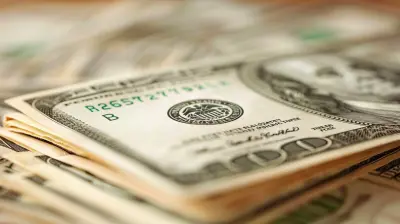Conquering Emotional Spending to Live a Debt-Free Life
24 October 2025
Do you ever find yourself splurging on things you don’t need—just because you’re stressed, sad, or even happy? Ever check your bank account after a shopping spree and wonder, what was I thinking? If this sounds familiar, you're not alone. Emotional spending is a silent budget killer, and if left unchecked, it can keep you trapped in a cycle of debt and financial anxiety.
But here’s the good news—you can break free. You don’t have to let emotions dictate your financial future. In this article, we’ll unravel the mysterious hold emotional spending has over your wallet and uncover strategies to overcome it once and for all.

What Is Emotional Spending?
Emotional spending happens when you buy things based on emotions rather than necessity. Maybe you've had a rough day, and a little retail therapy seems like the perfect pick-me-up. Or, maybe payday arrives, and the rush of seeing extra money in your account triggers an online shopping spree.Some common emotions that fuel impulse purchases include:
- Stress – “I deserve this after such a hard day.”
- Sadness – “Buying this will make me feel better.”
- Boredom – “I have nothing else to do, so why not shop?”
- Happiness – “I just got a raise—I should celebrate with something new!”
While these purchases might bring you temporary joy, they often come with long-term financial regret.

The Hidden Dangers of Emotional Spending
At first glance, emotional spending might not seem like a big deal. After all, what’s wrong with treating yourself every now and then? The problem arises when these small indulgences snowball into financial instability.1. Debt Accumulates Quickly
One shopping spree here, a little splurge there… before you know it, you're racking up credit card debt just to fund your emotional purchases. The worst part? Interest builds up, making it even harder to break free.2. Financial Goals Take a Backseat
Want to buy a house? Build an emergency fund? Travel debt-free? When emotional spending takes priority, those long-term dreams get pushed further and further away.3. Regret and Guilt Set In
You feel excited when you buy something new, but that high doesn’t last. Soon, reality hits, and you're left wondering—was it really worth it?And the cycle continues...

How to Identify Your Emotional Spending Triggers
Breaking the habit of emotional spending starts with self-awareness. You have to recognize what’s triggering those impulsive purchases before you can change your behavior.Keep a Spending Journal
For one month, track every purchase you make—no exceptions. Write down:- What you bought
- How much you spent
- What emotions you were feeling at the time
Patterns will start to emerge. You might notice you tend to shop when you’re feeling lonely or after a stressful day at work.
Set a 24-Hour Rule
If you feel the urge to buy something that’s not essential, wait 24 hours. This cooling-off period helps separate emotional impulses from genuine needs. More often than not, you’ll find that the desire to buy fades away.Identify Your Emotional Spending Triggers
Once you know when and why you emotionally spend, you can work on avoiding those triggers or developing healthier coping mechanisms.
Breaking Free from Emotional Spending
Now that you know the why, let’s focus on the how. It’s time to take back control and break the cycle for good.1. Shift to a Cash-Only Mindset
Credit cards make it too easy to spend money you don’t have. Try switching to cash or debit for discretionary spending. When you physically hand over cash, it makes you pause and ask, Do I really need this?2. Create an “Emotional Spending” Budget
Instead of cutting all fun spending, allocate a small amount of “guilt-free” money each month. Having a dedicated splurge budget allows you to indulge occasionally—without derailing your financial goals.3. Find Healthier Coping Mechanisms
Shopping is often a distraction from deeper emotions. Instead of reaching for your wallet when you feel stressed or sad, try:- Exercising
- Journaling
- Meditating
- Calling a friend
- Engaging in a hobby
Redirecting emotional energy into healthier outlets reduces the need for retail therapy.
4. Avoid Temptation
Unsubscribe from marketing emails, unfollow influencers who encourage mindless spending, and delete shopping apps from your phone. Out of sight, out of mind.5. Celebrate Financial Wins
Every time you resist an unnecessary purchase, acknowledge it! Treating financial discipline like a game makes it more rewarding. Set goals and celebrate milestones—just in ways that don’t involve spending.The Road to a Debt-Free Life
Imagine waking up without the weight of debt hanging over you. No more credit card balances draining your paycheck. No more stress over whether you can cover your bills.Becoming financially free isn’t about never spending money again—it’s about spending intentionally. When you take control over your emotional spending habits, you regain power over your financial future.
It’s not going to be easy at first. Like breaking any bad habit, it takes time, effort, and commitment. But every small step forward brings you closer to a life where money serves you—not the other way around.
So, are you ready to break the cycle? Your debt-free journey starts today.
all images in this post were generated using AI tools
Category:
Debt Free LivingAuthor:

Knight Barrett
Discussion
rate this article
1 comments
Rebecca McFarlin
Emotional spending: where your wallet cries more than your heart. Let’s break up with debt!
October 28, 2025 at 5:40 AM

Knight Barrett
Absolutely! It's crucial to recognize the emotional triggers behind spending. By understanding and addressing these feelings, we can pave the way to a debt-free future. Let's focus on healthier coping strategies!


